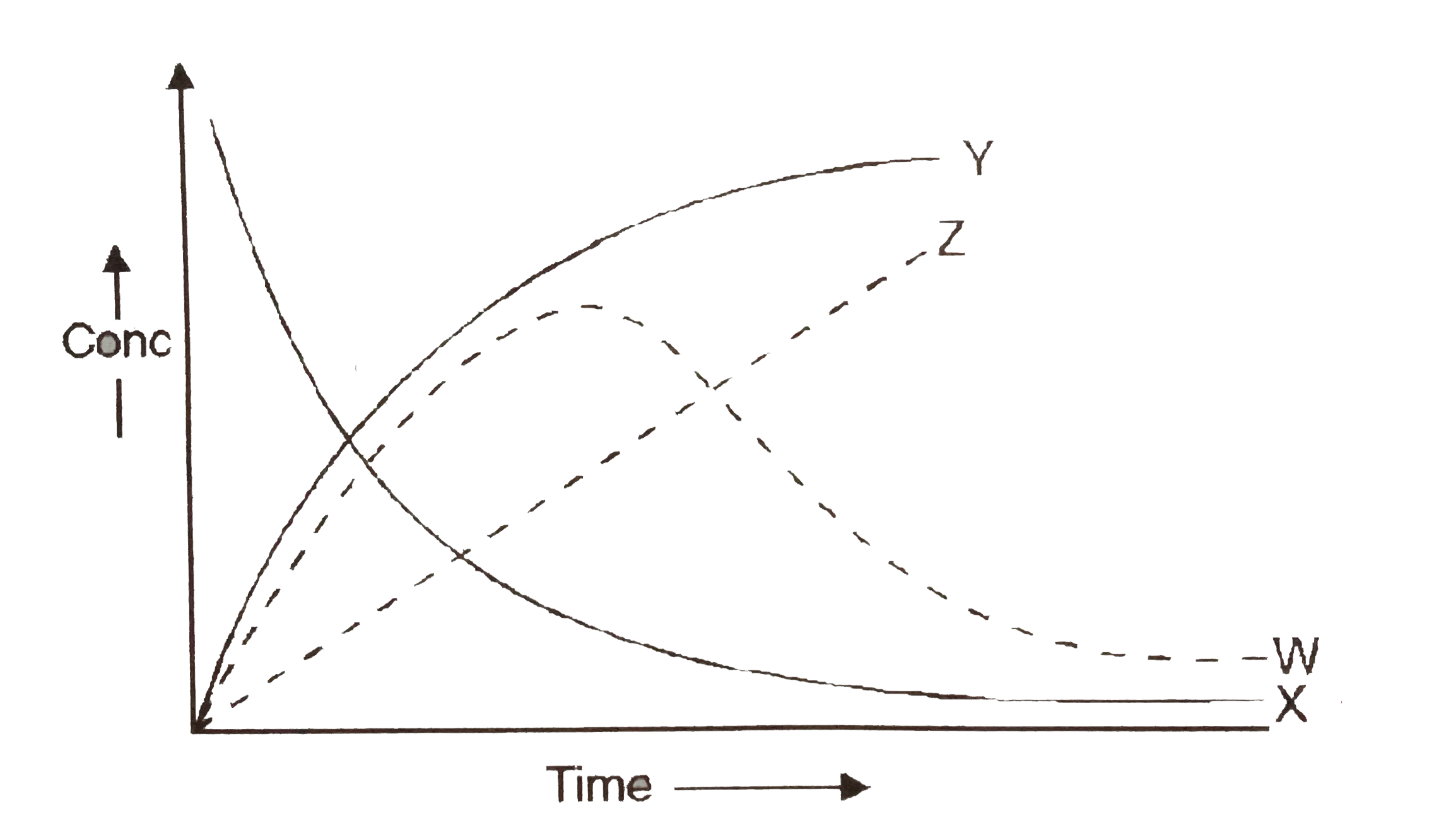Adjoining diagram, represents the energy profile for the reaction : A+B→C+D. What is the valye of the activation energy for the reaction ? C+D→A+B ?

25 kJ
55 kJ
85 kJ
−30kJs
The correct Answer is:A
Step by step video, text & image solution for Adjoining diagram, represents the energy profile for the reaction : A + B rarr C +D. What is the valye of the activation energy for the reaction ? C +D rarr A +B ? by Chemistry experts to help you in doubts & scoring excellent marks in Class 12 exams.
Topper's Solved these Questions
- BOOK - GRB PUBLICATIONCHAPTER - GRAPHICAL INTERPRETATIONEXERCISE - I.Electrochemistry1videos
GRAPHICAL INTERPRETATION
- BOOK - GRB PUBLICATIONCHAPTER - GRAPHICAL INTERPRETATIONEXERCISE - Electrochemistry9videos
GRAPHICAL INTERPRETATION
- BOOK - GRB PUBLICATIONCHAPTER - GRAPHICAL INTERPRETATIONEXERCISE - H. Chemical Kinetics1videos
GRAPHICAL INTERPRETATION
- BOOK - GRB PUBLICATIONCHAPTER - F-BLOCK ELEMENTSEXERCISE - Subjective type7videos
F-BLOCK ELEMENTS
- BOOK - GRB PUBLICATIONCHAPTER - HYDROCARBON (ALIPHATIC)EXERCISE - Previous years jee questions28videos
HYDROCARBON (ALIPHATIC)
Similar Questions
Knowledge Check
- Question 1 - Select One
Reaction A+B→C+D 38 kcal has activation energy 20 kcal. Activation energy for reaction, C+D→A+B is
A20 kcalB−20kcalC58 kcalD18 kcal - Question 2 - Select One
For the reaction, 2A+B→3C+D, which of the following does not express the reaction rate
Ad[D]dtB−d[A]2dtC−d[C]3dtD−d[B]dt - Question 3 - Select One
For the reaction 2A+3B→4C the rate of reaction may be represented as
Ar=−2d[A]dt=−3d[B]dt=4d[C]dtBr=−6d[A]dt=−4d[B]dt=3d[C]dtCr=−−12d[A]dt=13d[B]dt=14d[C]dtDr=−12d[A]dt=−13d[B]dt=14d[C]dt
For the reaction : A+2B→C+D, the expression of rate of reaction will be :
View SolutionA reaction A+B→C+D+q is found to have a positive entropy change, the reaction will be:
View SolutionThe activation energy of the reaction, A+B→C+D+38 kcal is 20 kcal. What would be the activation energy pof the following reaction.
C+D→A+BView SolutionFor the energy profile diagram

Heat of reaction will beView SolutionFor the reaction A+B→C+D The variation of the concentration of the products is given by the curve
 View Solution
View Solution


